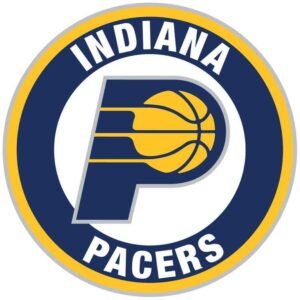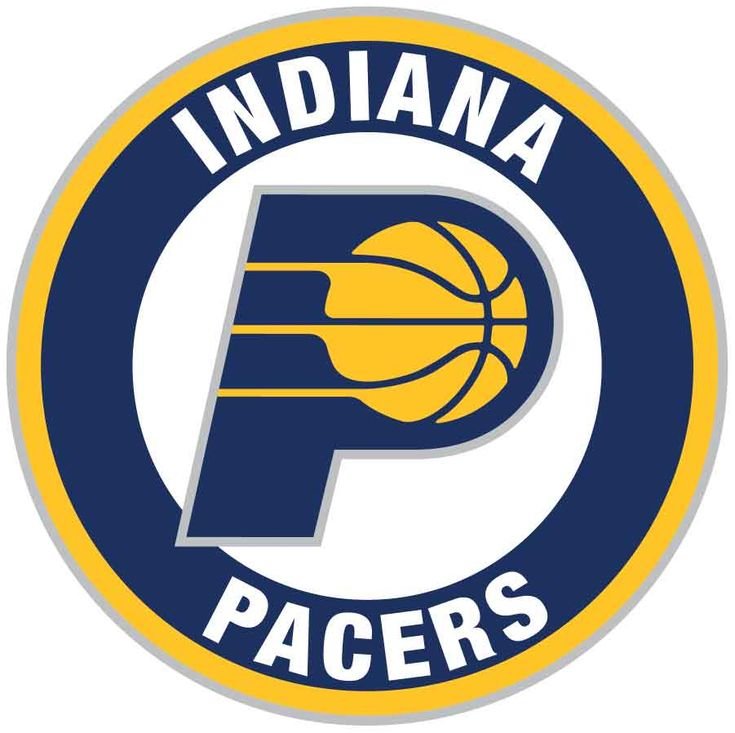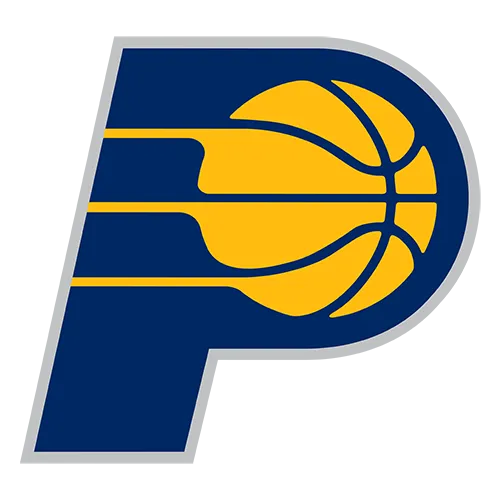NBA PLAYOFFS: WHAT TO EXPECT IN KNICKS-PACERS SERIES
When the smoke cleared this week in the Eastern bracket of the NBA playoffs, the conference’s two season-long juggernaut teams were nowhere to be found. Cleveland (64) and Boston (61) each won upwards of 60 times this year, but failing four times in a span of 10 days was enough to send both into early summers.
Still standing: the New York Knicks and the Indiana Pacers. The former eliminated the Celtics in a Game 6 blowout Friday night at Madison Square Garden, after the latter stunned the Cavaliers and their fans at Rocket Arena on Tuesday, ousting them in five.
The No. 3 seed vs. the No. 4 isn’t what Las Vegas saw back in October for the East’s championship round. But what folks showing up or tuning in will see are two of the hardest-working teams in the league. Both are grounded in defense, with significant contrast in their ways of scoring.
This will be fourth time New York and Indiana have met this late, four victories away from the NBA Finals. But it’s the first since 2000, when the Pacers prevailed and advanced. In 1994 and 1999, the Knicks were the ones eliminating nemesis Reggie Miller and his crew.
More recent history is tough to read. New York took the season series, 2-1, but Indiana won their showdown last spring in the East semifinals, 4-3. Every one of their past seven meetings have been decided by more than 10 points – by an average of 20.7 points, in fact.
Expect something much closer in the coming days.
Top storyline
Pace. The Knicks and the Pacers ended up in nearly the same space in their stats and their efficiency as measured over the 2024-25 season. They limited opponents to 113.3 points per 100 possessions and were separated by only 1.9 points per 100 on the offensive end.
But the eye test provides the context needed here. New York favors playing in the halfcourt, letting lead guard Jalen Brunson find openings either for himself or his teammates. He and big man Karl-Anthony Towns combined for more than 50 points nightly in the regular season, and the three other starters – Josh Hart, OG Anunoby and Mikal Bridges – better hit their double-digit averages because the Knicks’ bench chips in a league-low 21.7 while also playing the fewest minutes.
Indiana has been that rare team that can both pressure opponents 94 feet, then shift instantly into transition offense. They’ll even run after the other guys’ makes. Seven Pacers averaged at least 10 points or more; forward Pascal Siakam (20.2) was their only rep in the NBA’s top 50 in scoring and Tyrese Haliburton – while crafting a big-shot reputation – still is most inclined to seek out others with his passes.
In actual pace, as the NBA defines it, the Pacers ranked seventh. The Knicks, just 26th.
Keep your eyes on
Towns from downtown. KAT has made the case for himself, in deeds and words, that he might be the best-shooting 7-footer in NBA history. He won the 3-Point Contest at All-Star Weekend a few years back, and his career accuracy from the arc is a strong 40%. His ability to spread the floor for Brunson and New York’s wings is invaluable, as is the demoralizing effect on rival bigs who don’t get out far enough to contest him.
But Towns is coming off a Boston series in which he shot 3-for-19 on 3s (15.8%). Never mind the residual benefits of his prowess from deep; the Knicks rely on the big fella to generate points with those hoists. Indiana center Myles Turner (who also can hit 3-pointers) isn’t the most mobile defender, but other Pacers big such as Siakam and Obi Toppin can hang with Towns on the perimeter.
1 more thing to watch for each team
For Pacers: These guys can go 11 deep when they need to. Ten Pacers averaged at least 19 minutes, and the versatility in the roster allows for coach Rick Carisle to mix ‘n’ match as each situation requires. New York’s Tom Thibodeau has become somewhat notorious, to a silly degree, for riding his starters hard and sticking to just seven, sometimes eight, most nights. To the Knicks and their training staff’s credit, the minutes-gobblers haven’t broken down. Besides, there are longer timeouts in the postseason and no back-to-backs to navigate.
But Indiana still has more tools, more looks and more adaptability in its toolbox.
For Knicks: Anunoby is one of those barometer players, the Knicks rising or falling in concert with a lot of his individual performances. The beauty of that in his case is he can set that one at either end. Taking a greater role offensively since joining the Knicks two seasons ago, the sturdy 6-foot-7 native of London – by way of Missouri and Indiana – has helped New York to an 80-42 record (regular season plus playoffs) since arriving. This year, the Knicks have gone 28-10 when he scores 20 points or more. Anunoby also figures to draw defensive time on his old Raptors teammate Siakam, among others
1 key number to know
58.3% — Through the first two rounds, the Pacers have had an effective field goal percentage of 58.3%, what would be the highest playoff mark in NBA history.
The Pacers’ regular-season offense (115.4 points per 100 possessions) wasn’t nearly as good as it was last season, but they’ve scored 117.4 per 100 in the playoffs, easily the best mark among teams remaining.
Among the 38 players with at least at least 100 playoff field goal attempts through Friday, Aaron Nesmith (65.2%), Andrew Nembhard (60.6%) and Pascal Siakam (60.1%) rank first, second and third in effective field goal percentage. Nembhard has seen the biggest jump from the regular season (50.6%) among those 38 players, with five of the other seven Pacers who’ve taken at least 50 shots (all but Tyrese Haliburton and Obi Toppin) also having seen improvement.
According to Second Spectrum, the Pacers rank just seventh in shot quality in the playoffs (the Knicks rank last), but have outperformed the quality of their shots by more than double the amount of any other team. So they could be in store for some regression to the mean in the conference finals.
The Knicks had their worst defensive stretch of the season in Games 3-5 of the conference semis, but might have played their best defensive game as they closed out the Celtics in Game 6. Over the full series, they held Boston to 8.9 fewer points per 100 possessions than it scored in the regular season, having held Detroit to 5.1 fewer than its regular-season mark in the first round.
— John Schuhmann
The pick
Pacers in six. The Knicks haven’t been to the Finals since 1999 and haven’t won one in 52 years. Indiana only went once, losing to the Shaq-Kobe Lakers in 2000. One of these teams is going to hit the refresh button on championship opportunity. The Pacers’ deep roster and their taste of this round last spring (they got swept by the Celtics) could be enough to swing this. Remember, playing more guys means more places to spread the fouls around, too, when the action gets physical.
One thing that should not matter: home-court advantage. The Knicks hold the extra game by virtue of winning one game more than Indiana during the season. But both teams are stellar on the road. New York was 24-17, including 17-9 vs. East foes, and is 5-1 through two rounds so far. Indiana went 19-9 from Dec. 6 and finished 4-1 playing in Milwaukee and Cleveland during these playoffs.
——————————————————————————————————————–
NBA PLAYOFFS: WHAT TO EXPECT IN THUNDER-TIMBERWOLVES SERIES
All of the traditional franchises are on the golf course or the beach or have gone back to the drawing board. In their place, the Western Conference will be decided by a pair of teams with one combined NBA Finals appearance to their history. Well, they’ll double that number in roughly two weeks.
Such a transition was inevitable, and the Oklahoma City Thunder and Minnesota Timberwolves arrive thirsty and restless at the conference finals. Most importantly, they’re bringing Shai Gilgeous-Alexander and Anthony Edwards, the flag bearers for the next generation of stars. They’re very likely to arm-wrestle for the Magic Johnson trophy, given annually to the most outstanding player of the Western Conference Finals.
The Wolves managed a 2-2 split with OKC during the regular season, impressive given OKC won 68 times. Gilgeous-Alexander had scoring outputs of 37, 39 and 40 in three of the four; but here in the playoffs, there tend to be adjustments.
So it’s a series, then. Julius Randle, Rudy Gobert and Jaden McDaniels join Edwards to compete against Jalen Williams, Lu Dort and Chet Holmgren. Shai will compete against his cousin, Nickeil Alexander-Walker. This should be good.
Top storyline
Edwards collecting skins. When’s the last time a star this young was this driven to conquer the superstars of the game? Mounted on the wall of his home are the heads of generational greats — Kevin Durant, Nikola Jokić, LeBron James, Luka Dončić, and, oh look, fresh from the taxidermist, Stephen Curry.
Those are the players toppled by Edwards over the last calendar year in the playoffs. Next up, Gilgeous-Alexander? That might be the tallest order for Edwards, because the Thunder guard brings more help than most (if not all) of those others. Besides — as everyone should know — he’s also pretty good.
This contest within the contest promises plenty of energy and chest-beating if only because Edwards and Gilgeous-Alexander bring plenty of pride. They want to be the best, the face of the NBA. This series could help decide who is and who ain’t.
Keep your eyes on
Defense, defense, defense. If you enjoy or at least appreciate double-teams, quick rotations, rim protection, and on-ball pressure, then this series is for you. These are the two remaining teams in this postseason that do it best. The safest prediction is that the 2025 Western Conference Finals will not develop into a bucket brigade, and nobody will drop 130-plus points.
That doesn’t mean Gilgeous-Alexander, Edwards or Randle won’t peel off a 30-piece once or twice. Those three are on a roll and it’s hard to keep a boot on good offensive creativity for long. It does mean those scorers will work for most, if not all, of their points. They will be earned, not given.
OKC was top-rated all season defensively, while defense is what Minnesota does best. The Timberwolves will also try to control the pace. First team to 100 wins. Well: OK – 115.
1 more thing to watch for each team
For Thunder. This represents a homecoming for Holmgren, the pride of Minneapolis, where he was born and raised. When he was 6-foot-9 and as thick as spaghetti, Holmgren averaged 6.2 points and three rebounds per game as a high school freshman. Since then, his height and stats have grown, if not his bulk.
He can be a problem for the Wolves with his wingspan, ability to stretch the floor, quickness and rim protection. And mostly his motivation to show out for the neighborhood. If there’s an X-factor for the Thunder, pencil in the guy shaped like a pencil. Holmgren is looking to take a leap.
For Timberwolves. Randle is having the best stretch of his career, all things considered. He hasn’t been the Wolves’ best player in these playoffs, but certainly the most important. Because without his steady postseason production — 23.9 points, 5.9 assists, 5.9 rebounds through 10 games — Minnesota doesn’t get this far.
So here in this first postseason for Minnesota, it’s a win-win, not only for the Wolves but for Randle. He has effectively cleansed himself of previous playoff sins; either too injured or too ineffective to help his previous team, the Knicks. Those fans never let him forget it. As for Wolves fans? They’re howling at him differently, which is music to his ears.
1 key number to know
8.7 — The Thunder have outscored their opponents by 8.7 points per game in the restricted area, the best restricted-area differential in the playoffs. That includes a 54-32 advantage in their Game 7 win over the Nuggets on Sunday.
The Oklahoma City defense is best known for forcing turnovers, but it was also the best rim protection defense in the regular season. In road games*, the Thunder ranked first in the (lowest) percentage of their opponents’ shots (23%) that came in the restricted area and second in opponent field goal percentage (63.1%) in the restricted area. Both of those numbers have been lower in the postseason.
(* Looking at road games only accounts for shot-location discrepancies from arena to arena.)
The Wolves have the second-best restricted-area differential in the playoffs, having outscored their opponents by 7.4 points per game at the basket. That includes a 62-30 advantage as they closed out the Warriors in Game 5 of the conference semis. A little less than 33% of the Wolves’ shots, the highest rate in the postseason, have come in the restricted area.
The league is shooting more 3-pointers than ever, but the best shots on the floor remain those at the rim. And that’s where this battle will begin.
— John Schuhmann
The pick
Thunder in six. Both teams are qualified to have a date with destiny: OKC because it won 68 games and brings a Kia MVP candidate, and Minnesota because it’s the hottest team in the West. That said, the Wolves’ starting five will need to bring their A-games every night — their depth doesn’t compare. OKC will wear you down and eventually wear you out.












